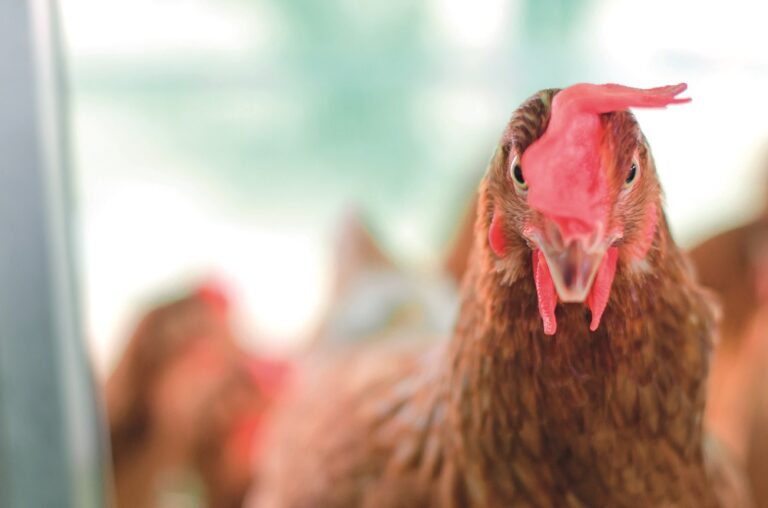There are ways to use feed and nutrition to extend hens’ lives without compromising egg size, quality or bird
In February 2018, BFREPA published a paper challenging the free-range egg sector to increase the depletion age of birds beyond the conventional 72 weeks. ‘Early’ depletion of flocks, before first grade egg output significantly reduces is arguably one of the most economically flawed concepts in the industry today, so the challenge has been well-regarded by most.
As hens age, eggs tend to get larger, which helps meet consumer demand for large eggs. However, alongside this, egg shell quality reduces with age, which may be exacerbated by good early egg production and an increase in egg size in late lay. Poorer shell quality leads to an increase in seconds which is not economically useful for the producer.
Geneticists have worked hard to extend the length of laying cycles while profitably delivering large eggs. Through selection and breeding programs there are now efficient laying hens with greater persistency of lay, alongside acceptable egg quality and egg numbers.
Helping the bird preserve good egg shell quality for a longer laying period requires specifically tailored nutrition. “We’re supportive of longer living, and laying, hens ,” says Andrew Fothergill, national poultry advisor at ForFarmers. “But quality of the egg is paramount to the producer, the packer, the retailer and the end consumer. The work the geneticists have been driving is critical to ensuring the profitability of the UK egg sector and nutrition plays a key part in supporting the genetics. We are mindful too of the challenges faced in extending laying cycles where some vaccine derived protections have been developed to support current flock life cycles, but may not be fully protective for extended periods. As expert nutritionists we have invested in the part we can play in helping to exploit the opportunity of the bird’s productive potential.
“As part of our range of diets for the laying bird we’ve developed a phased feeding approach which includes the strategic introduction of a diet called Sustain, typically at around 40 weeks of age. The core nutritional specification of the diet is consistent with the preceding diet in our phase feeding portfolio, in anticipation of sustained egg production, but is enhanced with specific sources of vitamins, trace elements and organic acid which are all cited in literature as being supportive of egg shell quality.”
Catherine Armstrong, the owner of Detchant Farm in Belford provided ForFarmers with an opportunity to feed two ends of an 8,000 bird flock – one on a conventional diet from the ForFarmers portfolio – “Original” – and one fed “Sustain” from mid-40 weeks, and committed to keeping the birds to as near 80 weeks as was practically possible. In addition to an almost immediate visual improvement in egg appearance, which was reported by the staff collecting and handling eggs, the results of the trial demonstrated that the adoption of Sustain nutritional regime increased shell thickness by 5.0um, offsetting the anticipated age-related challenges as reported from BFREPA’s Belgian observation.
“Interestingly, the additional shell thickness is provided by way of enhanced mineral deposition into shell structure, and this also adds around half a gram of egg weight to an otherwise unaltered voluminous egg size – a successful commercial and welfare outcome,” says Fothergill. “There were fewer seconds and more graded large eggs, and interestingly there was enhanced shell colour intensity and bloom.”
Nutrition and genetics go hand in hand in helping UK free range egg producers respond to BFREPA’s challenge to extend the laying cycle beyond 72 weeks. The trial is an important step in developing nutrition which supports the selection techniques by geneticists and should offer producers reassurance that a longer lay doesn’t have to mean poorer shell quality and reduced returns.


